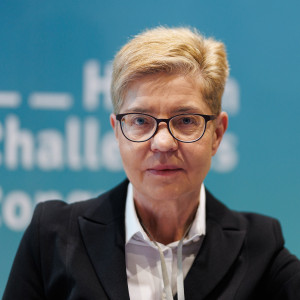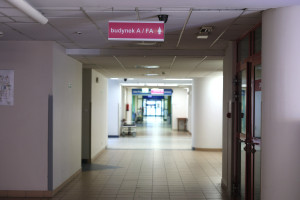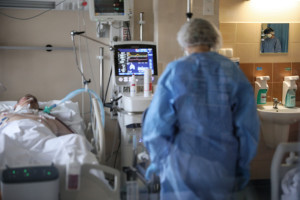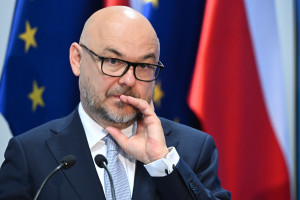1,450 PLN per session. Quacks "cure" cancer with impunity.

 Author: Iwona Bączek • Source: Rynek Zdrowia • Added: August 9, 2025 07:57 • Updated: August 9, 2025 08:16
Author: Iwona Bączek • Source: Rynek Zdrowia • Added: August 9, 2025 07:57 • Updated: August 9, 2025 08:16
"The problem of pseudo-medicine is systemic, because the Polish oncology treatment system, completely inefficient, actually rewards treatment by charlatans. Patients for whom doctors have no time buy time from charlatans," said Jakub Kosikowski, spokesman for the National Institute of Oncology, during the 15th Summer Oncology Academy.
- During the 15th Summer Oncology Academy, experts discussed the problem of pseudomedicine in oncology
- A 2021 study conducted at the Medical University of Gdańsk found that 52 providers offered various cancer treatment methods. The most common included intravenous vitamin C infusion, ozone therapy, and bioresonance.
- This market is adapting very flexibly to the situation. For example, during the pandemic, providers of the very popular bioresonance offered remote treatment, said Dr. Adrian Kacperczyk-Perdyan from the Medical University of Gdańsk.
- The Polish oncology treatment system, completely inefficient, actually rewards treatment by quacks. Patients for whom doctors have no time buy time from quacks, argued Jakub Kosikowski, spokesman for the National Institute of Oncology.
- We received over 4,000 comments on the "Lex Quack" bill during public consultations. Among them, several dozen are worth considering, said Jakub Adamski from the Monetary Policy Council's Office.
"In 2021, we conducted a study of the Polish market for complementary medicine, intended to support conventional treatment, and alternative medicine, intended to replace conventional treatment. The most common patients who use it are oncology patients, with 40-90% of cancer patients in Western countries admitting to using such methods," said Dr. Adrian Kacperczyk-Perdyan from the International Research Agenda of the Medical University of Gdańsk during the 15th Summer Oncology Academy.
He explained that the study identified 91 providers offering 70 methods , including 18 drug-based and 52 non-drug-based. These providers addressed 109 diseases or disease groups, the most common of which were:
- rheumatic diseases (58%),
- cancer (57%),
- chronic fatigue syndrome (56%),
- arterial hypertension (50%),
- allergies (49%),
- Lyme disease (48%),
- diabetes (47%),
- atherosclerosis (47%),
- depression (46%).
When it comes to cancer treatment, 52 institutions offered various methods. Typically, one institution offered a single method, but there were also some that offered as many as 13. The most common offers were:
- intravenous infusion of vitamin C (median price PLN 225),
- ozone therapy (173 PLN),
- intravenous glutathione infusion (PLN 190),
- hydrocolonotherapy (PLN 180),
- bioresonance (243 PLN),
- intravenous infusion of ozone salt (PLN 175),
- whole body hyperthermia (PLN 1,450),
- intravenous infusion of alpha-lipoic acid (PLN 188),
- local hyperthermia (PLN 550),
- surface ozone therapy (PLN 150),
- hyperbaric chamber (170 PLN),
- intravenous infusion of B vitamins (PLN 235),
- diet.
Therapy helped someone. Such a message is difficult to verify."We've noticed that this market is adapting very flexibly to the situation . For example, during the pandemic, providers of the very popular bioresonance therapy offered remote treatment. Patients would receive a package with special electrodes and then schedule a specific time with a center that would then turn on the bioresonance therapy. Now, these companies have gone a step further, sending their customers home small devices that they can use at any time," noted Adrian Kacperczyk-Perdyan.
Prof. Jacek Jassem from the Oncology and Radiotherapy Clinic at the Medical University of Gdańsk and president of the Polish Cancer League reminded us that the human psyche defends itself against difficult information, so a message about a simple, non-toxic method that can cure cancer will always find an audience. Even if it's just one in 10 or 20 people among the vast number of cancer patients, it's still a significant group of clients.
"It's noticeable that people offering these therapies rely on information that's very difficult to verify . A doctor won't recommend a treatment to a patient that isn't based on scientific evidence, i.e., clinical trials. When asked about the effectiveness and safety of a proposed method, a quack usually responds that it "helped someone," although it's safe to assume that most of the cases cited as examples were fabricated," the professor assessed.
The expert recalled the history of Peruvian herbs, which some time ago caused such a sensation among patients that oncologists decided to organize a press conference devoted to this topic.
"Two men came to the meeting with journalists and brought with them a patient cured thanks to this therapy, and as proof of its effectiveness, they presented medical records. It showed that the man had stage I laryngeal cancer. The point is, he was treated with radiotherapy, which allows us to cure almost 100% of patients at this stage," emphasized Professor Jassem.
A doctor has no time for his patient. A charlatan has just the opposite.Jakub Kosikowski, spokesman for the Supreme Medical Chamber, argued that the problem is systemic in nature, because the completely inefficient Polish oncological treatment system actually rewards treatment by quacks .
" If we hear that an oncologist is admitting 50-60 patients for chemotherapy in a single day , it must inevitably resemble an assembly line . The patient doesn't have the slightest chance to talk to the doctor or ask important questions. That's why they go to the private sector, where they buy time from the doctor, or, worse yet, buy time from a quack . Will the National Oncology Network reduce the space for quacks to operate? If oncology care coordinators start operating across the country, there's a chance. But for now, I don't see it," Kosikowski admitted.
Jakub Adamski , director of the Department of Cooperation at the Office of the Patient Rights Ombudsman, recalled the draft law "Lex quack" .
"The project has been submitted for public consultation. As expected, we received many comments—over 4,000— and now we have time to review them. Among them, several dozen are worth working on and considering how to incorporate them," said Director Adamski.
Lex quack. "This bill will change a lot""The purpose of this law is to open up a field that no public institution has previously had access to or was particularly unwilling to address. If, for example, a situation arises in which a doctor engages in pseudo-medical practice, the Monetary Policy Council and the National Medical Council will have a tool to take action. Currently, such tools are lacking. It's high time to change this, because we see every day how charlatans operate and how medical disinformation works," he argued.
He noted that after the law comes into force, it will be possible to implement active measures towards such entities, which in itself will be a major change, but also make these measures more effective.
"Until now, individuals and entities operating without any medical credentials have been operating without any 'supply' in terms of administrative procedures for imposing fines. There were also no tools to expose and condemn improper practices. This will change, as the draft law allows us to publish such information. This, in turn, should make it easier to track down subsequent similar cases. Therefore, it's not just about punishment, as the penalized entity can register under a different name and continue operating, but also about a more comprehensive approach to the issue ," emphasized Jakub Adamski.
As Jakub Kosikowski noted, there is another group that is forgotten – doctors without the right to practice their profession or with a suspended right to practice their profession.
"If such a person continues to see patients, the medical council cannot do anything about it. The prosecutor's office, on the other hand, does not handle such cases. Therefore, we live in a legal limbo where doctors without a license to practice do nothing about this," added the NIL spokesman.
Copyrighted material - reprint rules are specified in the regulations .
rynekzdrowia












